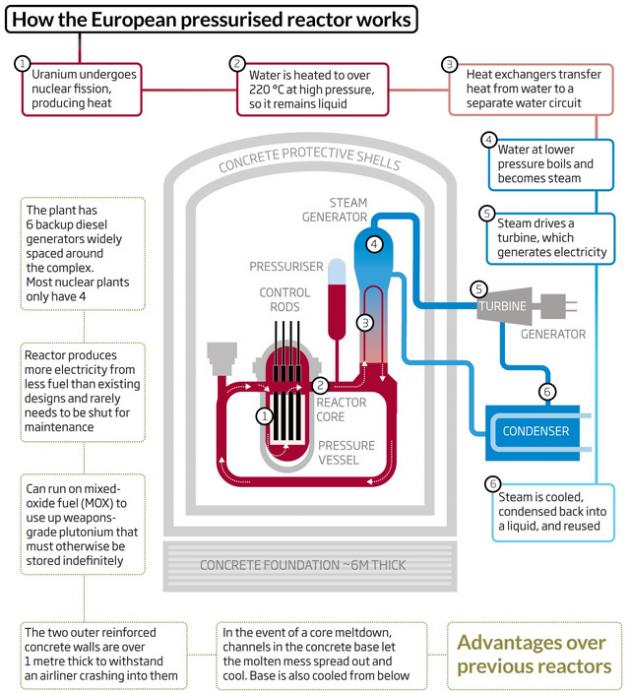The UK Will Build Its First Nuclear Plant in 25 Years
2013.10.24
The UK wants to reduce greenhouse gas emissions by a whopping 80 percent by 2050. That is a very challenging goal. To do so, they will have to go fully carbon-free by the year 2030.
To meet their environmental deadline, the UK is going to build the biggest, safest and first nuclear power plant on the British Isles in nearly 25 years.
Their annual energy usage is around 2400 TWh, but experts predict that number will fall to between 1400 and 1900 TWh in the year 2050. Wind, solar, wave and other alternative energy sources cannot match current consumer demand, so their only bet now is nuclear power.
The Cameron government announced yesterday that it had inked a deal with a consortium of the Électricité de France (EDF), a French government-owned utility, and a pair of Chinese firms, to construct a pair of pressurized water reactors at the Hinkley Point C power station in Somerset for £26 billion.
Here's how it works:

To ensure that Hinkley Point C does not suffer Fukushima's fate, the EPR incorporates a number of fail safe systems. There will be four emergency cooling loops that remain active up to three years after the plant has been shut down, which will be powered by six separate diesel generators spaced around the facility in separate, waterproof buildings.
The two separate leak-tight containers surrounding the molten radioactive core will be enveloped by a pair of concrete walls 2.6 meters thick, which can withstand airliner-class plane strikes and massive internal pressures caused by a full meltdown.
[Wikipedia - New Scientist - The Guardian]
To meet their environmental deadline, the UK is going to build the biggest, safest and first nuclear power plant on the British Isles in nearly 25 years.
Their annual energy usage is around 2400 TWh, but experts predict that number will fall to between 1400 and 1900 TWh in the year 2050. Wind, solar, wave and other alternative energy sources cannot match current consumer demand, so their only bet now is nuclear power.
The Cameron government announced yesterday that it had inked a deal with a consortium of the Électricité de France (EDF), a French government-owned utility, and a pair of Chinese firms, to construct a pair of pressurized water reactors at the Hinkley Point C power station in Somerset for £26 billion.
Here's how it works:

To ensure that Hinkley Point C does not suffer Fukushima's fate, the EPR incorporates a number of fail safe systems. There will be four emergency cooling loops that remain active up to three years after the plant has been shut down, which will be powered by six separate diesel generators spaced around the facility in separate, waterproof buildings.
The two separate leak-tight containers surrounding the molten radioactive core will be enveloped by a pair of concrete walls 2.6 meters thick, which can withstand airliner-class plane strikes and massive internal pressures caused by a full meltdown.
[Wikipedia - New Scientist - The Guardian]
More Articles
Copyright © Fooyoh.com All rights reserved.